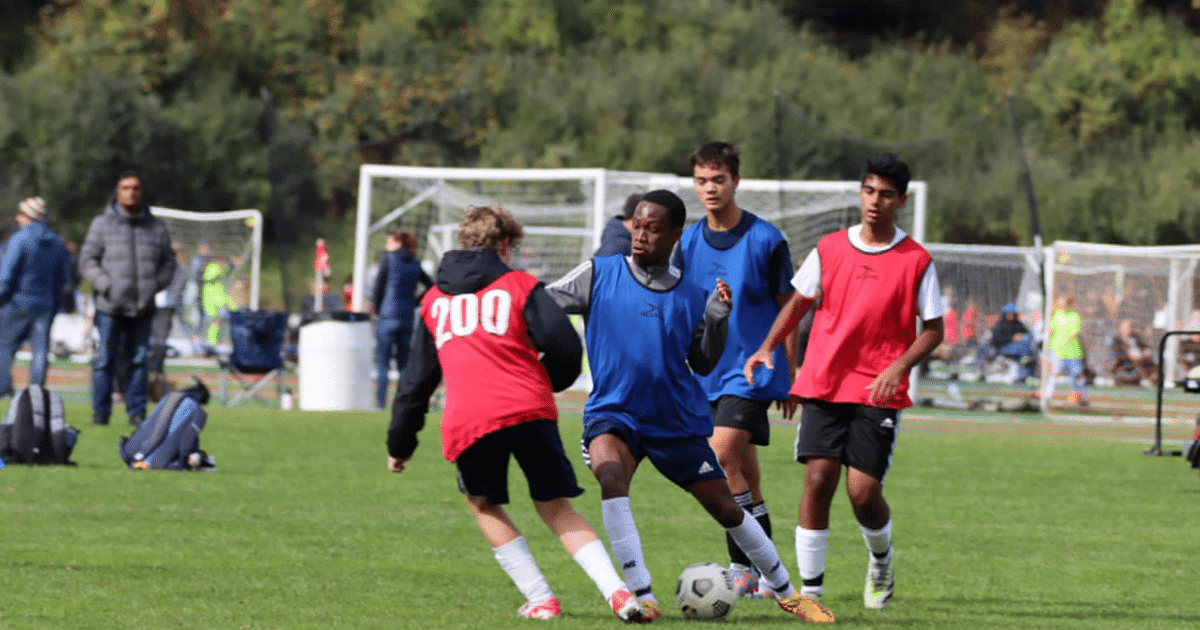Mastering the Art of the Body Feint
A body feint in soccer is a deceptive technique that tricks opponents into thinking you’re moving one way when you’re actually planning to go in another direction – and mastering this skill can transform your game completely.
TL;DR:
What Makes a Body Feint So Effective?
The body feint stands as one of soccer’s most elegant yet practical skills. When executed properly, it creates space where none existed and provides attackers with precious seconds to advance past defenders.
In youth soccer especially, quicker and more agile players can leverage body feints to devastating effect as defenders often react instinctively to the initial fake movement.
I believe the most brilliant aspect of body feints is their versatility. Unlike more technical skills that require specific game situations, a well-executed body feint can be deployed virtually anywhere on the field – whether dribbling toward goal, creating space in a tight midfield battle, or simply maintaining possession under pressure.
Step-by-Step Guide to Perfecting Your Feint
Starting Position
- Position the ball at your feet with feet shoulder-width apart
- Maintain eye contact with the defender
- Plant your non-dominant foot firmly on the ground
Executing the Deception
- Shift your weight onto your non-dominant foot
- Quickly transfer weight back to your dominant foot
- Move your dominant foot as if initiating a move in that direction
- Rapidly return your dominant foot to its original position
- Capitalize on the defender’s reaction by making your actual move
Recovery & Direction Change
- After completing the feint, quickly shift weight back to non-dominant foot
- Keep your head up with eyes tracking the ball
- Continue your run or initiate your next move
Common Mistakes to Avoid

Telegraphing Your Move
Nothing ruins a body feint faster than broadcasting your intentions through obvious body language. Your movements should appear natural and committed as if you’re genuinely moving in the initial direction.
Overcommitting
Putting too much energy into your fake direction makes recovery difficult if defenders don’t bite on the feint. Keep movements controlled so you can quickly adjust if needed.
Failing to Read Your Opponent
In my experience, players who focus too much on their own technique often miss crucial defensive cues. Always observe your opponent’s positioning and weight distribution to time your feint perfectly.
Becoming Predictable
Using the same feint repeatedly throughout a match gives defenders the pattern recognition they need to stop you. Incorporate different moves to maintain the element of surprise.
Training Tips for Body Feint Mastery
The body feint doesn’t require a field or even a ball to practice initially. Start by perfecting the body movements alone, focusing on quick weight transfers and natural-looking deception. Once comfortable, introduce the ball and gradually increase speed.
Practice against imaginary defenders before testing your skills in low-pressure scrimmages. The body feint becomes more effective as it becomes more instinctive, requiring less conscious thought during execution.
Don’t overthink it! Just do it.
Final Thoughts
The body feint represents soccer’s perfect blend of artistry and practicality. When mastered, it transforms predictable attacks into dynamic opportunities and gives players a psychological edge over defenders.
Remember that deception in soccer isn’t just about flashy moves – it’s about creating and exploiting space with intelligent movement.
Incorporate body feints into your regular training regimen, and you’ll soon notice defenders hesitating just long enough for you to make your mark on the game.

Written By: SoccerNovo
SoccerNovo is an independent youth soccer media brand built to help parents, players, and coaches better understand the game and the pathways available in U.S. soccer. Our mission is to make youth soccer simpler, clearer, and more accessible for everyone involved in it.
Let’s connect






